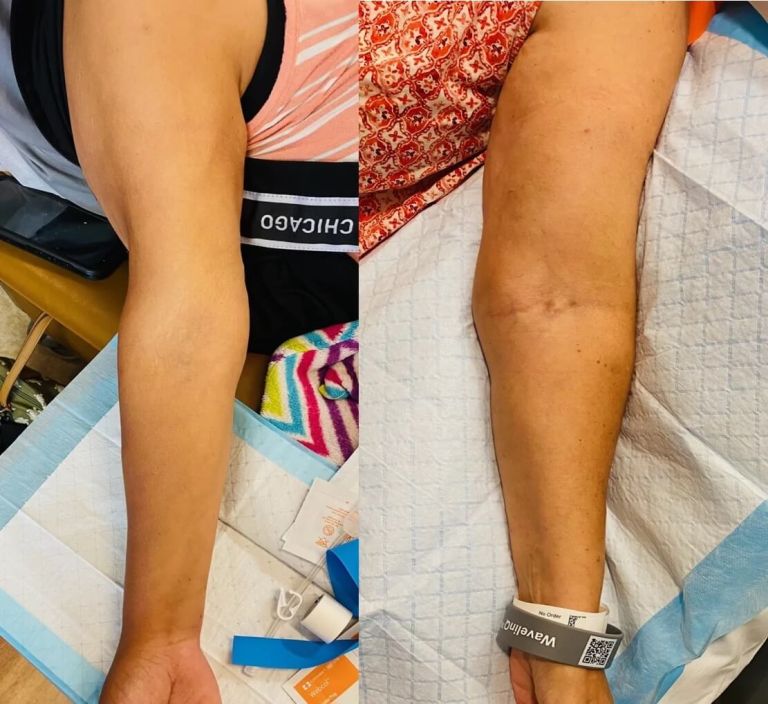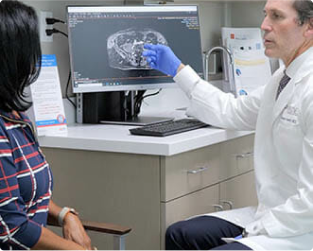EndoAVF
Percutaneous Fistula Creation - EndoAVF
EndoAVF (Endovascular Arteriovenous Fistula) is a cutting-edge procedure designed to create an arteriovenous fistula (AVF) for hemodialysis access without the need for traditional open surgery. Advanced imaging techniques, such as ultrasound or fluoroscopy, are used to guide the procedure and ensure precision. The procedure begins with a small incision, usually in the arm, to insert a catheter. The catheter is navigated through the blood vessels to reach the target artery and vein. Using the catheter, a specialized device creates a connection between the artery and the vein, allowing arterial blood to flow directly into the vein, which is necessary for efficient hemodialysis. After creating the fistula, the catheter is removed, and the small incision is closed, typically with minimal suturing. The newly created fistula is then monitored for proper blood flow and function.
Benefits of Choosing EndoAVF
- Minimally Invasive: EndoAVF is a less invasive procedure compared to traditional surgical fistula creation, resulting in smaller incisions and less trauma to the body.
- Reduced Recovery Time: Patients typically experience faster recovery times and can resume normal activities more quickly.
- Lower Risk of Infection: The minimally invasive nature of EndoAVF reduces the risk of infection compared to open surgical procedures.
- Less Scarring: EndoAVF results in minimal scarring due to the smaller incisions required.
- Outpatient Procedure: Often performed as an outpatient procedure, reducing the need for hospital stays.
- Improved Patient Comfort: Reduced pain and discomfort post-procedure compared to traditional surgery.
- Fewer Complications: Lower risk of complications such as wound infections and hematomas.
- Higher Initial Success Rate: EndoAVF procedures generally have a higher initial success rate in creating functional fistulas.
- Preservation of Vein Integrity: Better preservation of vein structure and integrity, which is important for future access sites.
- Enhanced Cosmetic Outcomes: Improved cosmetic results due to less visible scarring and smaller incision sites.
Surgical Fistula

vs.
EndoAVF

Ideal Candidates for EndoAVF
EndoAVF is particularly beneficial for patients who:
- Require long-term hemodialysis.
- Are not suitable candidates for traditional surgical AVF creation due to medical reasons.
- Prefer a less invasive option with quicker recovery and fewer complications.
By offering a minimally invasive alternative to surgical fistula creation, EndoAVF provides an effective and patient-friendly solution for establishing reliable hemodialysis access.
Contact Us Today


What to Expect from Your Visit to Pedes

Ultrasound
Advanced ultrasound-guided examination techniques will be used to visualize the veins, arteries, or both, in your legs. This is often used in the diagnostic process to detect the presence and extent of disease.

Consult
Once we review the results of your diagnostic tests, our physicians will collaborate with you to develop a personalized treatment plan, ensuring the best course of treatment for your specific condition.

Treatment
Your treatment plan will be personalized to you and your individual needs. At Pedes, we specialize in minimally invasive procedures and nonsurgical treatments, all of which are performed by our dedicated vascular physicians within the comfort of our state-of-the-art facility.

Follow up
We ensure our patients receive continuous care and support with regular follow-up visits. Each follow-up visit is scheduled at the time of your in-office appointment. Should you have a concern between
appointments, we encourage you to call our office and get scheduled at any time.

Treatment Options
Learn more about our treatment options

What to Expect
Learn more about our what to expect

Vascular Disease
Return to the interactive body page




